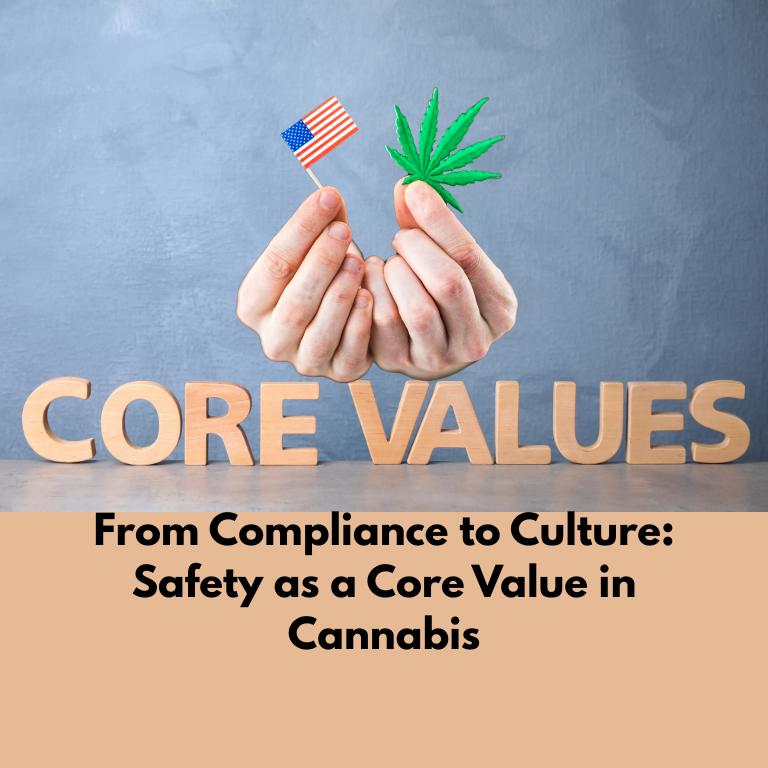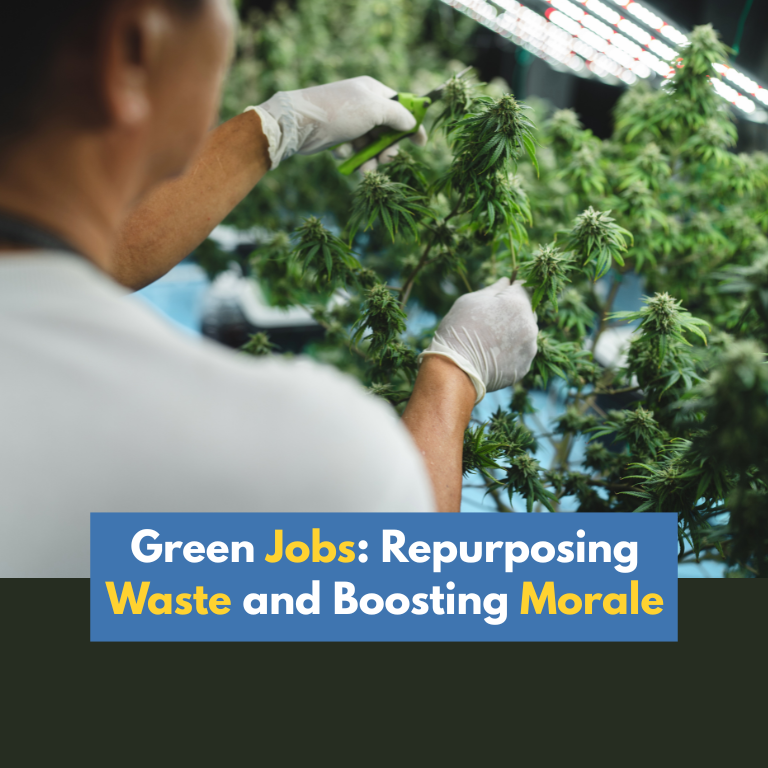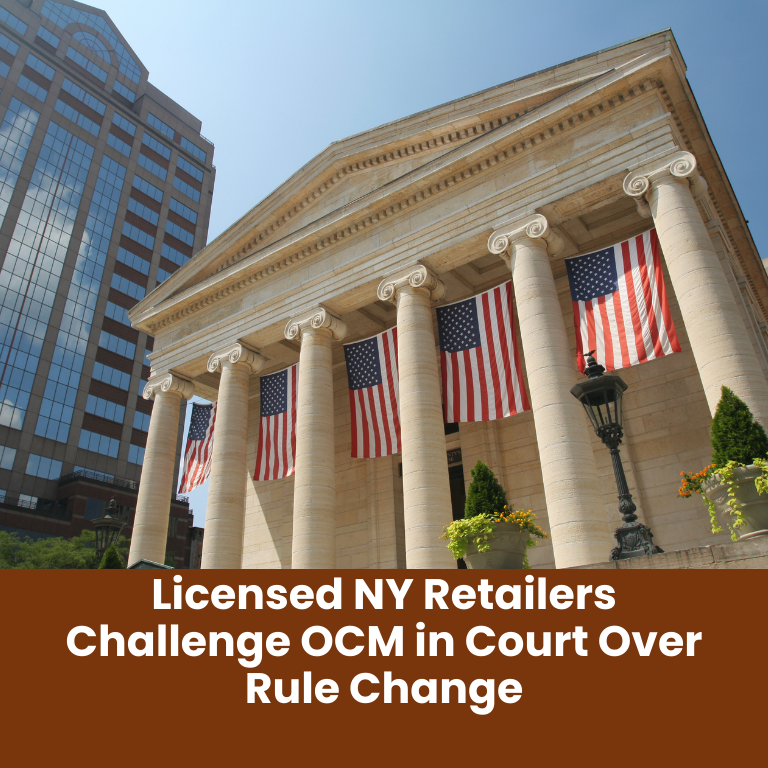From Compliance to Culture: Safety as a Core Value in Cannabis Industry Workplaces
In the evolving cannabis industry, ensuring worker safety has become more than just a compliance requirement—it’s now a critical cultural value that influences everything from day-to-day operations to long-term success. As the industry grows, so too does the need for robust safety measures that go beyond the basics of regulatory adherence. In this article, we explore the transition from a compliance-driven safety approach to one that integrates safety as a core value woven into the fabric of the cannabis workplace culture.
The Cannabis Industry’s Evolving Safety Landscape: More Than Just Following the Rules
When cannabis was first legalized in many parts of North America, businesses focused primarily on compliance with federal, state, and local regulations. The emphasis was on meeting the legal requirements for workplace safety, which included ensuring proper handling of chemicals, ensuring proper ventilation in grow rooms, and protecting workers from potential harm. While these rules are essential, they don’t necessarily address the bigger picture of creating a workplace culture where safety is integrated into the daily fabric of the organization.
In the early days of cannabis legalization, workers were often left to manage safety issues themselves, with minimal input from employers or the wider industry. Over time, however, the industry has matured, and the importance of worker safety has gained more attention. In 2024, cannabis operators and safety advocates alike are recognizing that a successful cannabis company cannot simply operate as a legal entity but must embrace safety as a fundamental value at all levels of the organization.
The Transition: Moving Beyond Compliance to a Culture of Safety
As the cannabis industry matures, the concept of safety is evolving. The transition from compliance-based safety programs to those that reflect a deeper commitment to employee wellbeing represents a shift toward a culture of safety. This shift goes beyond ensuring that employees are following the law—it is about cultivating an environment where safety is viewed as an essential, shared responsibility.
Building a culture of safety involves more than just checking boxes on a regulatory list. It requires leadership commitment, consistent training, and open communication about safety issues. Cultivating this culture means safety becomes inherent in every decision made, from the design of a cannabis cultivation facility to the distribution of products.
A culture of safety also encourages workers to take ownership of their own safety and that of their peers. It is about empowering employees at all levels to voice concerns, participate in safety training, and contribute to safety protocols. In this way, safety is no longer viewed as a top-down directive; instead, it becomes part of the company’s ethos.
Key Elements of a Safety-First Cannabis Culture
To establish a safety culture within the cannabis industry, several elements must be in place. These elements create the foundation for a robust and sustainable approach to worker protection.
Leadership Commitment to Safety
The first and most important element of a safety-driven culture is leadership commitment. Company executives and managers must actively prioritize safety. This starts with clearly communicating that safety is a core value, not just a regulatory requirement. The leadership team should consistently reinforce safety practices by setting an example and holding themselves accountable.
Strong leadership also means allocating resources to safety programs, including investing in safety training, equipment, and safety officers. Leaders should create opportunities for open dialogue about safety concerns and actively engage with workers to understand the specific challenges they face.
Comprehensive Safety Training Programs
Effective safety training programs are a cornerstone of a safety culture. Employees must be regularly trained on the latest safety standards and protocols. Training should not only address legal compliance but also focus on empowering workers to take proactive measures for their own safety.
This training should be hands-on and ongoing. For example, in the cannabis cultivation and extraction sectors, workers need to be trained on the safe handling of hazardous chemicals, fire safety protocols, and proper ergonomics for heavy lifting. Ongoing safety training keeps workers informed about emerging risks and ensures that safety practices evolve as the industry does.
Employee Involvement in Safety Practices
A crucial aspect of a safety-first culture is employee involvement. Workers must have a voice in shaping safety procedures and policies. Companies should encourage employees to participate in safety committees, hazard assessments, and routine safety audits. Workers who feel like active contributors to the safety process are more likely to take ownership of their personal safety and contribute positively to the overall safety culture.
Comprehensive Hazard Assessment and Risk Mitigation
A safety-focused cannabis company regularly conducts hazard assessments to identify and address potential risks. These assessments should cover every aspect of the business—from cultivation and extraction to distribution and retail. Companies should perform regular safety audits and risk assessments to identify new hazards as they arise, especially in a rapidly evolving industry.
This risk mitigation process can involve a variety of measures, such as improving ventilation systems in grow rooms to reduce the risk of respiratory hazards, ensuring proper PPE (personal protective equipment) is provided, and creating safety plans for emergencies such as fires, chemical spills, or product contamination.
Incentives and Accountability
A well-rounded safety program should include incentives for safe behavior. When employees follow safety procedures and contribute to the overall culture, they should be rewarded or recognized. Positive reinforcement encourages continued safe practices and helps maintain high levels of employee morale.
Equally important is ensuring accountability when safety standards are not met. Holding individuals and teams accountable for following safety protocols is essential to sustaining a culture of safety. It is important that accountability is applied fairly and that corrective actions are taken when safety lapses occur.
Addressing the Unique Safety Challenges in Cannabis Workplaces
The cannabis industry is unique, and its safety challenges reflect this. For instance, cannabis cultivation and extraction involve working with chemicals, heavy machinery, and potentially dangerous equipment, all of which require specialized safety knowledge. Moreover, cannabis production involves navigating complex and constantly evolving legal and regulatory frameworks. This makes safety even more complex—especially in jurisdictions where cannabis remains illegal at the federal level, creating tension between state and federal safety standards.
Additionally, cannabis workers face risks that are sometimes not fully understood, such as the potential exposure to pesticides, mold, or other contaminants in grow rooms. High-stress environments can also lead to accidents and injuries if safety procedures aren’t followed consistently.
This is why a culture of safety within cannabis companies must extend beyond simply complying with OSHA (Occupational Safety and Health Administration) or other regulatory requirements. Companies must provide workers with the tools, resources, and knowledge to handle their unique risks proactively.
The Role of Technology in Supporting Cannabis Worker Safety
Advancements in technology can significantly enhance safety protocols within the cannabis industry. Tools like real-time hazard tracking software, safety management systems, and wearable devices can monitor employees’ exposure to various risks and provide valuable data to help businesses take preventive action.
For example, wearable devices can track workers’ physical activity and posture in grow operations, helping identify potential strains or injuries before they become major issues. Additionally, automated systems in extraction labs can reduce the number of human interactions with potentially hazardous chemicals, thereby minimizing risk.
Embracing Safety as a Core Value
The transition from a compliance-focused approach to one where safety is deeply embedded into the company culture is essential for the future of the cannabis industry. As cannabis businesses continue to grow and expand, fostering a culture of safety will not only help protect workers but also contribute to the overall success and sustainability of the business.
When safety becomes a core value, it resonates throughout the entire organization—from the CEO to the frontline worker. Cannabis companies that embrace this shift will be better equipped to navigate the challenges of the industry and build lasting, successful businesses. Safety is no longer just a regulatory obligation—it’s a fundamental part of building a responsible and thriving cannabis industry.













